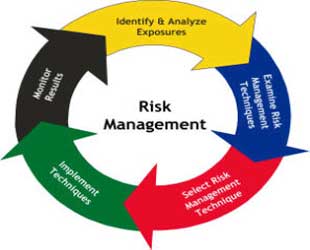While starting a new software development project creates some enthusiasm, the engineer part of the software developer and project manager will also see this event as a set of possible risks. These risks encompass many domains: business, project team, software architecture, technology… Besides being aware of the possible impediments to the project success, risk management is also used to make choices in the product and technology roadmaps and manage priorities when resources are limited. Here is a list of interesting articles that discusses approaches to risk in software development.
Risk Management Is Project Management for Adults
This material from Tom DeMarco and Tim Lister contains some definitions pertinent to risk management begins with a definition (right in the title) of risk management itself: project management for adults.
Read this on http://www.informit.com/articles/article.aspx?p=2123314

Software Development Risk Assessment
The purpose of this prompt list is to provide project managers with a tool for identifying and planning for potential project risks. It is process-based and supports the framework established by the DOE Software Engineering Methodology. It will be used within the stage exit process as an additional tool to ensure that the project manager has identified and is managing known risk factors. Additional detailed information describes the various risk factors and how to score them.
Read this on http://energy.gov/sites/prod/files/cioprod/documents/riskasmt.pdf
Risk Estimation During Agile Project Planning
This article proposes a practical approach on how to estimate risks during Agile planning. The possible risk causes are divided into five areas: acquisition, supply, development, support and organizational.
Read this on https://www.scrumalliance.org/community/articles/2014/january/risk-estimation-during-agile-project-planning
A Risk-Driven Model for Agile Software Architecture
Developers have access to more architectural design techniques than they can afford to apply. The Risk-Driven Model guides developers to do just enough architecture by identifying their project’s most pressing risks and applying only architecture and design techniques that mitigate them. The key element of the Risk-Driven Model is the promotion of risk to prominence. It is possible to apply the Risk-Driven Model to essentially any software development process, such as waterfall or agile, while still keeping within its spirit.
Read this on http://www.methodsandtools.com/archive/agilesoftwarearchitecture.php
Managing Risks in Distributed Teams
This article proposes a process for managing risks associated in managing the distributed software projects.
Read this on http://www.infoq.com/articles/managing-risks-dist-teams
Enhancing Project Success with Risk Management
Risk refers to uncertain future conditions or circumstances that may adversely impact a project if they occur. A risk represents the possibility, not the certainty, of a future event affecting the success of a software development project. Risk is inherent in all projects. By effectively managing risk, the project team can reduce the likelihood that an adverse event will occur and the impact on the project should such an event occur. Risk management is a repeatable, structured process that identifies and systematically addresses risks minimizing their effect on projects.
Read this on http://www.projectmanagementplanet.com/enhancing-project-success-with-risk-management/
Risk Based Testing, Strategies for Prioritizing Tests Against Deadlines
Often all other activities before test execution are delayed. This means testing has to be done under severe pressure. It is out of question to quit the job, nor to delay delivery or to test badly. The real answer is a prioritization strategy in order to do the best possible job with limited resources.
Read this on http://www.methodsandtools.com/archive/archive.php?id=31
